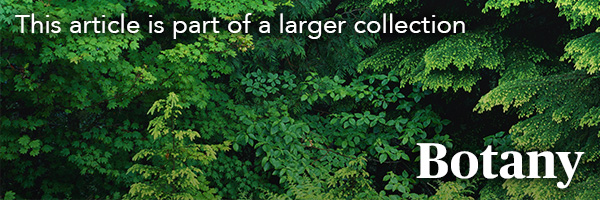Spruce is an evergreen conifer (genus Picea) of the pine family (Pinaceae). About 40 species occur worldwide, in circumpolar distribution in the Northern Hemisphere; 5 are native to Canada. White spruce (P. glauca) and black spruce (P. mariana) are found nearly from coast to coast in the Boreal forest; Sitka spruce (P. sitchensis) in a narrow band along the West Coast; Engelmann spruce (P. engelmannii) in interior BC to the Rocky Mountains; red spruce (P. rubens) in the Great Lakes-St Lawrence and Acadian forest regions. Norway spruce (P. abies) and blue spruce (P. pungens) have been introduced.
Trunks are long and straight; crowns dense and narrow. Evergreen leaves are needlelike, usually 4-sided, often sharply pointed and borne on woody pegs or stalks. Seed cones are 2-10 cm long, nonwoody with rounded scales and small bracts. Pollination occurs in spring. Winged seeds are shed in the fall.
Spruces, used for pulp, paper and lumber, are the most important commercial conifers. Canada's tallest reported tree (95 m) is a Sitka spruce, the "Carmanah Giant," in the Carmanah Valley on the west coast of Vancouver Island.

 Share on Facebook
Share on Facebook Share on X
Share on X Share by Email
Share by Email Share on Google Classroom
Share on Google Classroom




